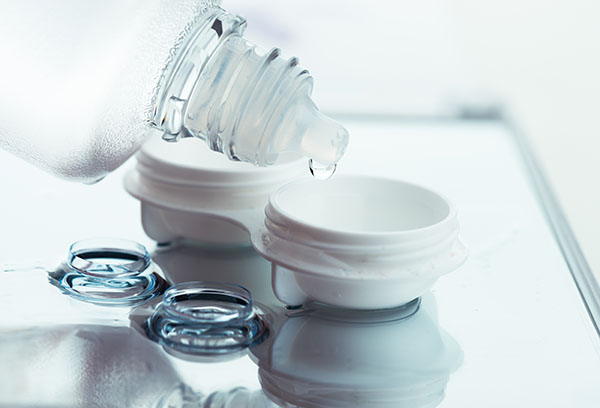Common disinfectant wipes may contain DANGEROUS CHEMICALS, warn researchers
05/24/2023 / By Zoey Sky

Mothers or guardians often use disinfectant wipes to clean off kids. You may even have a pack of disinfectant wipes in your bag to clean up small messes. But according to researchers, these common products may contain quaternary ammonium compounds that are linked to serious health problems.
What are quaternary ammonium compounds?
Quaternary ammonium compounds, or quats, refer to a class of hundreds of chemicals also used in paints, pesticides, hand sanitizers, personal care products and more.
Considered pesticides, quats are used in antimicrobial products like disinfectants and sanitizers that kill bacteria and viruses on surfaces.
More than 2,000 pesticide products contain quats. Quats are also found in aerosols, pressurized liquids, ready-to-use sprays, soluble concentrates, wettable powders and disinfectant wipes.
Depending on the product, quats may be used in homes, schools, medical offices, industrial sites and even on certain food processing equipment. Some products are used to kill algae, fungi, mildew and mold.
The first antimicrobial pesticide containing quats was registered in 1947.
Even medical products and cosmetics may also contain quats, including prescription and over-the-counter (OTC) products like lotion, nasal sprays and topical antiseptics regulated by the Food and Drug Administration (FDA).
Side effects of exposure to quats
Studies have found that quats are linked to various health issues, such as:
- Asthma
- Birth defects
- Infertility
- Metabolic disruption
- Skin disorders
You can be exposed to harmful quats in several ways. The chemicals can be absorbed through the skin or accidentally ingested after you use and touch a disinfectant wipe. The chemicals can also stick around on surfaces after you use disinfectants.
Inhalation of quats is also a risk, especially if you use or are exposed to spray disinfectants. Quats can also attach to dust and become airborne. (Related: Research suggests common dry cleaning chemical is linked to Parkinson’s disease.)
If inhaled, quats may cause the following side effects:
- Coughing
- Dizziness
- Flu-like symptoms
- Headache
- Irritation in the mouth, lungs, nose and throat
- Shortness of breath
If swallowed, quats may cause the following side effects:
- Abdominal pain
- Dizziness
- Excessive salivation or drooling
- Flu-like symptoms
- Headache
- Irritation or burning in the mouth, nose and throat
- Nausea
- Vomiting
Ingesting concentrated quats may cause ulcers of mucous membranes and bloody vomit. In serious cases ingesting quats may cause confusion, difficulty breathing, low blood pressure and weakness. Death may occur within one to two hours after the ingestion of concentrated quats.
Health experts warned that the groups most at risk are small children because disinfectant wipes are often used in daycares or schools; elderly folks in supervised care; healthcare workers; cleaning professionals; and those who often use disinfectants in daily life.
Quats are common components in popular disinfectant wipes and sprays, especially in products that claim to “kill 99.9 [percent] of germs.”
But in a recent peer-reviewed paper, scientists assembled the conclusions from a fast-growing body of quat studies that highlight several alarming main issues:
- Quats are linked to severe health problems
- Quats contribute to antimicrobial resistance
- Quats pollute the environment
- Quats are “not particularly effective”
The researchers warned that people are mainly exposed to quats through disinfectants, and most Americans are thought to have some level of these harmful chemicals in their blood.
Protect your family from the side effects of exposure, especially children and the elderly, to disinfectant wipes and other products that contain quats.
Visit Chemicals.news to learn about common harmful chemicals and which products to avoid.
Watch the video below to find out why you should learn how to make soap at home and avoid chemicals in store-bought soaps.
This video is from the snobbish prepper channel on Brighteon.com.
More related stories:
Canadian study finds banned cancer-causing chemicals in 88% of household products.
California to BAN cancer-causing additives found in candies and other food products.
Sources include:
Submit a correction >>
Tagged Under:
children's health, Dangerous, disinfectant wipes, health science, poison, products, QACS, quaternary ammonium compounds, quats, research, toxic chemicals, toxic ingredients, toxins, wipes
This article may contain statements that reflect the opinion of the author
RECENT NEWS & ARTICLES
Chemicals.News is a fact-based public education website published by Chemicals News Features, LLC.
All content copyright © 2018 by Chemicals News Features, LLC.
Contact Us with Tips or Corrections
All trademarks, registered trademarks and servicemarks mentioned on this site are the property of their respective owners.




















